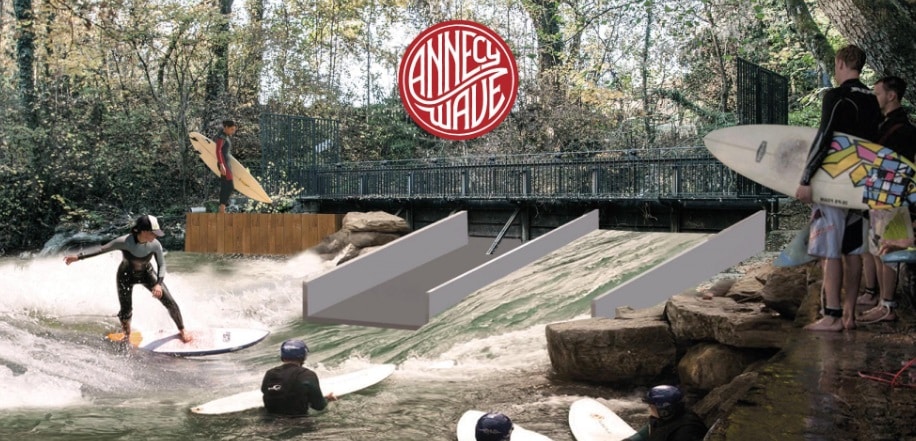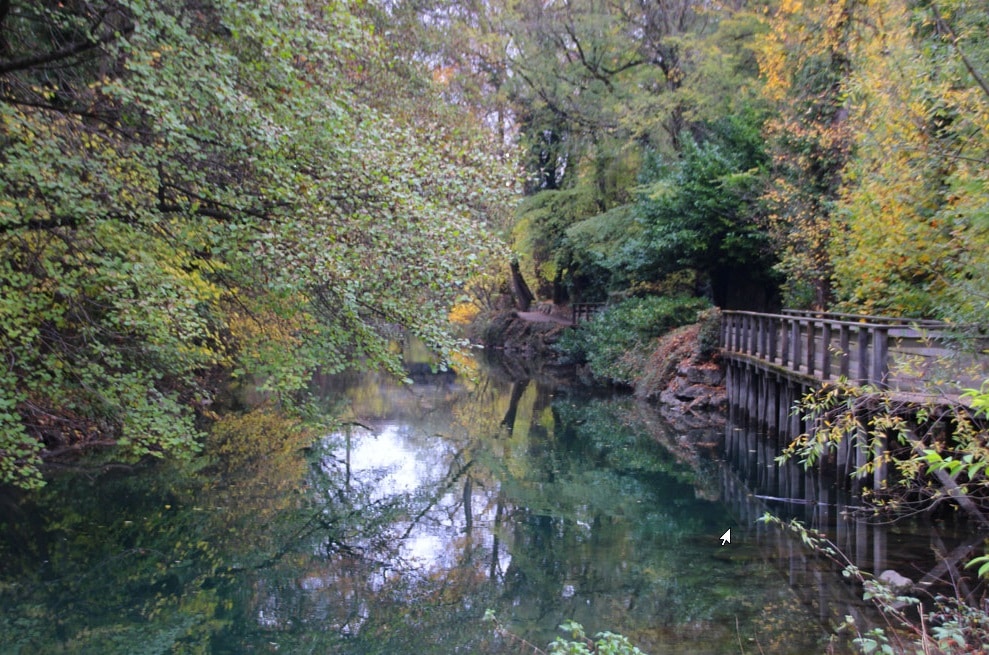The Thiou is a 3.5 km long river which has its source in Lake Annecy and then joins the Fier.
An emblematic river of Annecy
One of the smallest rivers in France, the Thiou originates in two places in the lake: the Vassé canal (between the Pâquier and the Jardins de l’Europe) where you can find the Pont des Amours and the port (between the Jardins de l’Europe and the Marquisats) where you can find the boats that take you around the lake (the Libellule, the Cygne, the Savoyard and the Amiral).
It then crosses the old prisons, then continues through the old town, the Quai de l’Évêché and a wooded area of one and a half kilometres, before crossing the commune of Cran-Gevrier and flowing into the Fier. The Thiou is ideal for walks because of the improvements made to its banks. From the banks of the lake to the town centre of Cran-Gevrier, passing through the town centre and quiet areas in the semi-forest, the Thiou ensures a varied and pleasant stroll.
On the section of the promenade between the blue rainbow bridge and the Rocade bridge, numerous fruit trees have been planted to respect the nesting of birds and to green the area near the railway line.
Street art in Annecy
This walk passes under the large pylons that carry the Annecy expressway. They have magnificent graffiti on their bases, which are regularly replaced by new ones as the graffiti artists see fit. Further upstream, the walk passes near a children’s playground, the wall nearby is covered with ephemeral works that we invite you to discover. The 10/10 urban culture festival of the association Art By Friends uses this site for one of its artistic events.

History of the Thiou
This small river has played an important role in the development of Annecy. During the Gallo-Roman period, Boutae, which is the old name of Annecy, saw the development of the Allobroges craftsmen along the Thiou.
In the Middle Ages, the force of the river’s current enabled mills to extract flour. Paddle wheels enabled blacksmiths to create swords, files and knives. In the 19th century, the river allowed the creation of new industries: cotton manufacture, the Aussedat paper mill, the Cran forges, sawmills, tanneries and printing works. Before this period, there was no quay, the houses gave directly onto the water, as can still be seen with doors opening onto the Thiou.
In 1874, the Thiou sluices were built, they allowed the level of Lake Annecy to be regulated to ensure a sufficient level for the factories. You can see near the Pont de la Halle, next to the Town Hall, a gauge that measures the lake’s level. In January 2018, its level dropped from 112 centimetres to 13 centimetres, a record since 1947.
Surfing on the Thiou
An old dam has been fitted out to create an artificial wave. It is the association“Les Surfeurs d’eau douce” which manages the access to this unique equipment. The site is located at the Mercier weir. Enthusiasts can surf in the Alps using only the force of the river’s current in the centre of Annecy.

Brunchs du Thiou
Every Sunday in July, from 10 am to 2 pm, Cran-Gevrier organises events on the theme of “Nature in the city”. The meetings take place at the Cercle de l’eau with, on the programme :
- Initiations to pilates, yoga and fitness,
- The projection of a film, a visit of the Thiou with a guide,
- A musical atmosphere with some concerts by local artists,
- A brunch with the participation of local merchants,
- Activities with the presence of associations related to nature in the city.
More information : Annecy: we surfed on the Thiou

















